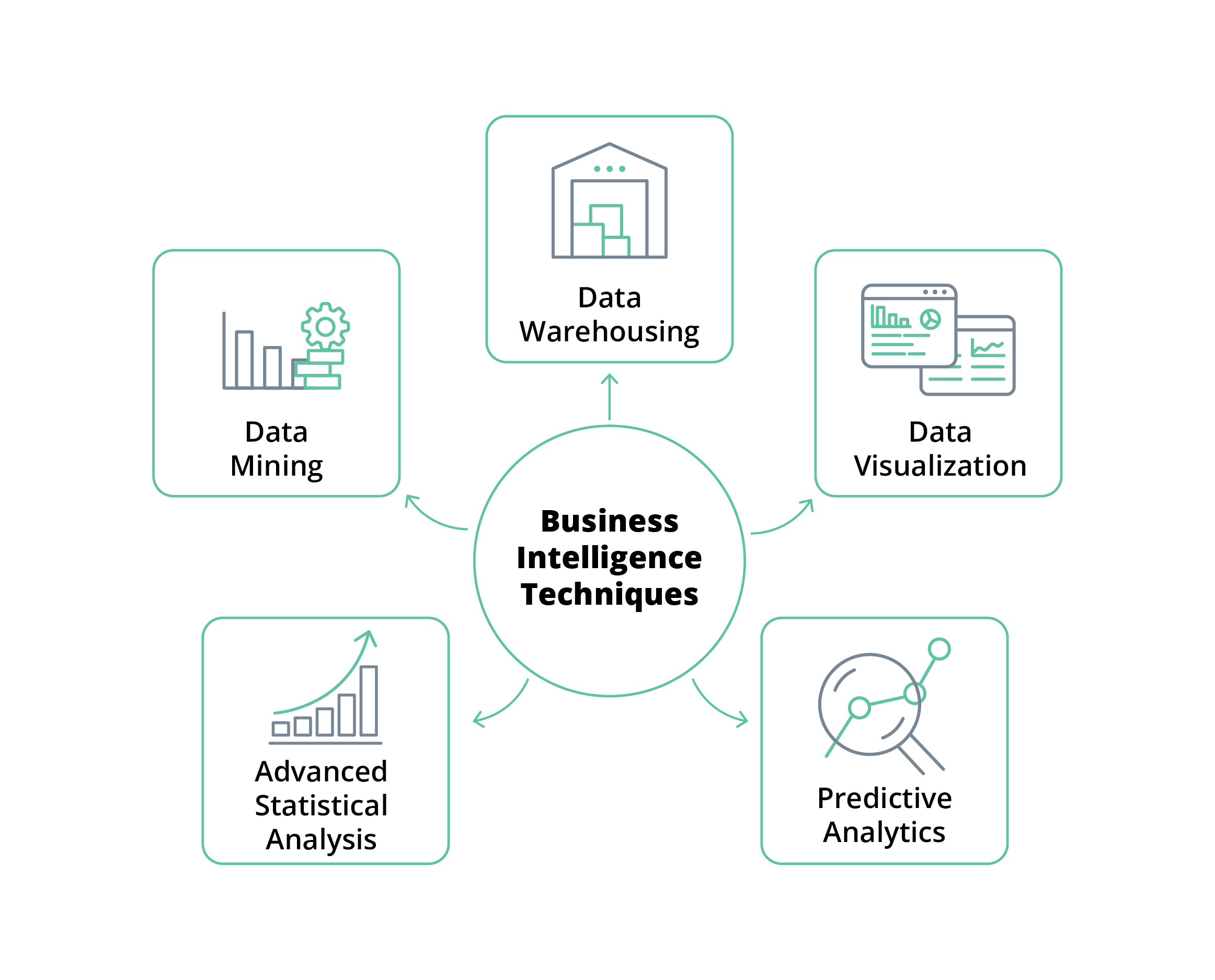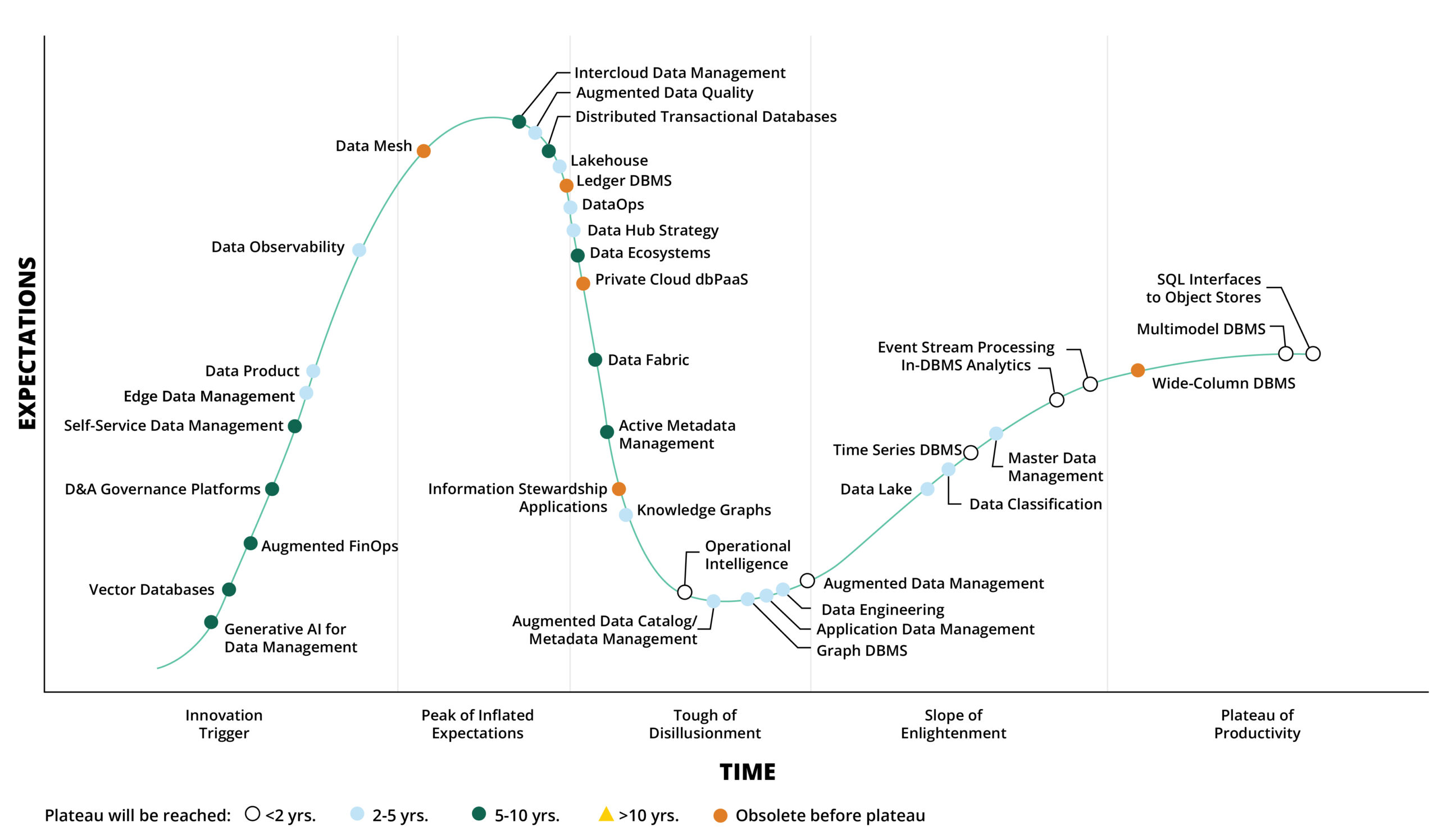If you want to keep your business competitive in 2024 and 2025, you’ll have to use effective data management and business intelligence. But in doing so, you may face many challenges. According to O’Reilly, in 2020, 60% of respondents indicated issues with “too many data sources and inconsistent data,” while 50% noted “disorganized data stores and lack of metadata.”
The global business intelligence software market is witnessing rapid growth, demonstrating $27.87 billion in revenue in 2024. Driven by increasing demand for real-time data processing and advanced analytics, BI solutions are constantly evolving to mitigate challenges with data quality and management.
Intellias engineers know how to integrate data management and BI for businesses of all sizes. For example, Intellias has relied on industry best practices and the experience of our professional engineers to build a data management solution for a European loan management business. Our company designed and created an end-to-end analytical platform for BI reporting and advanced analytics.
Basics of Data Management
Data management is the process of collecting, storing, organizing, protecting, verifying, and processing data to ensure its:
- Accessibility
- Reliability
- Timeliness
Data management practices and procedures keep data safe and usable throughout the data lifecycle. Good data management is important for organizations to make smart choices, work better, and follow data rules — which helps them get the most out of their data.

Data management speeds up and simplifies important tasks within an organization’s data environment. Typical data management pipelines include:
- Data preparation: cleaning and transforming raw data into a usable format for analysis, which includes correcting errors and merging datasets
- Data pipelines: automating the movement of data across systems
- ETL processes: extracting data from one location, transforming it for analysis, and loading it into a data warehouse
- Data catalogs: managing metadata and providing a full view into changes, locations, and quality
- Data warehouses: aggregating various data sources, accommodating diverse data types, and simplifying the path to data analysis
- Data governance: setting standards, processes, and policies to ensure data security and integrity
- Data architecture: creating a structured approach to manage how data is processed and how it flows through the organization
- Data security: ensuring data is protected from unauthorized access and data breaches
- Data modeling: documenting how data moves within an application or across the organization
As you can see, data management is a complex process that requires much knowledge and expertise. But it’s a crucial part of your company’s growth due to its benefits (see our thoughts on the importance of data engineering for your business, covering data management trends and advantages.)
Basics of Business Intelligence
Business intelligence (BI) is a process that enhances decision-making in companies by analyzing business data. The key components of BI include:
- Data analysis: integrates techniques like data mining, process analysis, and performance benchmarking to transform raw data into practical insights
- Reporting: simplifies complex datasets into understandable reports, performance metrics, and trends that help with management decisions
- Infrastructure: requires robust infrastructure to efficiently collect, store, and analyze data
- Tools and software: includes spreadsheets, query software, data visualization tools, data mining applications, and OLAP platforms
- Self-service BI: allows non-technical users to access and analyze data, helping more team members to make data-driven decisions

BI and data management combined aim to provide accurate data to avoid poor decision-making, following the principle that better information leads to better outcomes.
How Can You Combine Data Management and Business Intelligence?
Combining data management and business intelligence is necessary for companies to gather and interpret their data with minimal issues. Setting up a proper process is the key to minimizing manual work, adding consistency, and ensuring data quality. Let’s see how to get these benefits.
1. Integrating Data Management with BI Tools
Integrating data management with business intelligence is your first step to transforming raw data into actionable insights. You’ll have to connect your data storage infrastructure with analytical tools, ensuring data is securely stored and immediately available for analysis. Both tools are usually combined through APIs or middleware for a stable data flow.
For example, in a project for a telecom provider, Intellias designed a comprehensive cloud-based data architecture using Microsoft Azure. This solution seamlessly combines data warehousing and management capabilities with robust business intelligence functions. By migrating from on-premises systems to this cloud platform, the telecom company dramatically reduced data processing time from five hours to just 28 minutes and optimized the CPU load by 85%.
2. Ensuring Real-Time Data Processing
Real-time data processing is necessary to understand what’s going on with your company at this exact moment. You can use technologies like Apache Spark for large-scale data processing or Kafka for stream processing.
These tools can be configured to ingest data streams continuously from various sources such as sensors, logs, and transactional systems. You can then set up real-time dashboards by connecting them to BI software like Tableau that supports live data feeds. Finally, you can optimize the data output and processing speed to ensure that dashboards reflect the most current data for timely decision-making.
Explore the high-level architecture we’ve developed for a telecom provider.

3. Building Automated Reporting and Visualization
To minimize manual work with reporting and visualization, you can automate the process with Tableau, Power BI, QlikView, Domo, Sisense, and other tools. Design templates and set up rules for data extraction and transformation that cover your reporting needs.
The modern trend is applying generative AI and machine learning algorithms to enhance automation and analysis. Your whole department can get easy trend predictions and faster anomaly detection with AI technology, so it should be an important element in your data strategy.
4. Benefiting from Intellias’s Experience
Intellias delivers comprehensive data management and business intelligence solutions across a wide range of industries.
For instance, we created a robust data analytics platform for a global transportation manufacturer, optimizing their customer data processing. Similarly, our digital retail consulting helped a major food retailer resolve data mismatches that were causing financial losses, significantly improving their data flows and platform efficiency.
The engineering team at Intellias also helped a telecom provider develop a data center infrastructure management system, integrate existing data centers with cloud technologies, and provide consumption efficiency. This collaboration allowed us to provide a top-tier service, resulting in enhanced infrastructure visibility and powerful analytics capabilities. The client was also able to meet current demands of the telecommunications industry while getting a future-proof solution.
Challenges in Integrating Business Intelligence and Data Management
Current challenges in integrating data management and business intelligence are both technical and organizational. It’s necessary to address both aspects to leverage the full benefits of your company’s data. Let’s check out these challenges in detail.
1. Technology Stack
Your tech stack will define and support the system’s architecture, functionality, and performance over its lifecycle. That’s why it’s necessary to choose a technology stack that positively impacts development efficiency, scalability, maintainability, and your overall success.
You might also face issues with:
- Compatibility and integration. The chosen technologies must be compatible with each other and with existing systems within your organization. If you use an Oracle Database, you might have to use extra middleware when integrating a solution like Tableau.
- Scalability and performance. The tech stack must be scalable enough to cope with future growth in user numbers and data volume without degrading performance. You could use Apache Hadoop for its ability to scale horizontally, but its complexity and maintenance requirements might challenge some companies.
- Availability of expertise. The availability of skilled professionals who can work with chosen technologies is another significant factor. You might require solutions that use AI, ML, or even Python frameworks like TensorFlow. If your in-house team doesn’t have the expertise, you’ll have to partner with an IT team like Intellias to get the best results.
- Security and compliance. The tech stack must ensure data security and compliance with any applicable laws and regulations. For example, a healthcare provider would be expected to comply with HIPAA in the USA, significantly limiting possible technologies and potentially increasing costs.
Selecting your tech stack is one of the most important decisions, as it impacts the whole company’s and the project’s workflow. That’s why you must carefully weigh all factors.
Choosing Intellias as your data management and BI services partner ensures that you can navigate complex technology stack decisions with confidence and precision. Our team brings exceptional expertise to address critical issues such as compatibility and integration, seamlessly aligning diverse technologies to enhance your existing systems or build new ones.
2. Legacy Mindset
A legacy mindset is a significant challenge that is often encountered in large-scale corporations. It represents resistance to change and a preference for traditional approaches. Addressing these challenges requires organizations to build a culture of continuous learning:
- Providing training and education to demystify new technologies and showcase their benefits
- Using leaders as advocates for change to encourage people to use new BI and data management tools
- Demonstrating quick wins from new technologies to build confidence and support among the workforce
Use data. Data is often the best way to help show people a new path forward. I like to say data democratizes the decision-making process. It helps ensure everyone has a seat at the table, not just the loudest or most senior voice in the room. Data alone is not enough. You’ll need to ensure you have carefully planned out the story you want to tell. A succinct well-done strategy will have a clear ‘so what’ and will use data to back up the points, culminating in a singular recommendation. You have to bring people along when there is a legacy mindset present, help them see why this new way is better.
Partnering with a data analytics services company like Intellias can help you introduce a cutting-edge approach to data management and BI in your organization.
3. Lack of Centralization
Lack of centralization can hinder your company’s ability to make timely and informed decisions. Centralization refers to the consolidation of data sources and management processes into a unified system that provides a single source of truth across your organization. Without this centralization, companies face many issues.
The most common challenges include:
- Data silos. If different departments have their own tools and systems, valuable insights are siloed. This limits the organization’s ability to get a unified view of the situation.
- Inconsistencies and errors. When data is scattered across multiple systems without a centralized governance framework, inconsistencies in how data is formatted, stored, and updated are common. For example, customer data managed separately by sales and customer service departments might lead to multiple profiles for the same customer, causing confusion and potential errors in customer engagement strategies.
- Increased IT complexity. Maintaining multiple disparate systems requires more IT resources and increases overall operational costs. Each system might require separate maintenance, support contracts, and integration efforts, collectively increasing the total cost of ownership.
These issues are usually solved by introducing an enterprise data warehouse or data lake, ETL processes, data governance policies, and a data-driven culture.
4. Addressing Unreliable Data
Unreliable data can stem from various sources, including human error, system faults, or inadequate data collection methods. All of these things significantly degrade the quality of insights derived from data analysis.
Challenges posed by unreliable data include:
- Data entry errors. Manual data entry is prone to mistakes. Inconsistent data entry practices across departments can lead to discrepancies that are difficult to resolve.
- Outdated information. Data that is not regularly updated can become obsolete. This is particularly true of contact details in a customer database, which can change frequently.
- System integration issues. Data from integrated systems can become unreliable if the integration isn’t properly maintained. For instance, if a CRM system and an ERP system are not syncing correctly, sales data might not accurately reflect inventory levels.
You can address unreliable data by using automated data collection and entry, conducting regular data cleansing and implementing data validation techniques. Engineers at Intellias used robust data validation approaches when they developed a business intelligence platform for reporting.
5. Combining Disparate Data Sources
Combining disparate data sources is a common challenge in data management and business intelligence. It involves integrating data in various formats and from various systems into a unified view. This integration is crucial for comprehensive analytics and informed decision-making.
Usually, companies face the following challenges:
- Varied data formats: Data collected in different systems may be stored in various formats or structured in incompatible schemas, making direct integration challenging.
- Inconsistent data quality: Data quality can vary significantly across sources, with some datasets being outdated, incomplete, or inaccurate.
- System integration complexity: Integrating legacy systems that were not designed to work together can be technically complex and costly.
- Regulatory and compliance issues: Data privacy laws (like the CCPA and GDPR) may restrict how data from different regions can be combined and analyzed.
To easily access all your data from various sources, you will have to set up a data lake, standardize ETL procedures, implement middleware solutions, and conduct regular data audits.
Top Trends for Business Intelligence and Data Management
As data management and BI technologies rapidly evolve, staying ahead is crucial. The Gartner Hype Cycle for Data Management 2023 highlights the latest advancements shaping the future. Intellias diligently monitors these innovations, rigorously tests them, and integrates only the most effective solutions into our service offerings. In the following sections, we explore some emerging technologies and showcase how they can enhance your business operations and drive success.

Generative AI is changing how businesses think by making virtual models and combining new data faster, accelerating predictive analytics and decision support. This technology provides more dynamic and scalable solutions, helping businesses effectively anticipate market trends and customer needs.
Example: A retail company uses generative AI to model customer behavior scenarios for optimizing stock levels and personalizing marketing strategies.
Data mesh and data fabric represent decentralized approaches to data architecture, promoting data accessibility and interoperability across various business departments. In these frameworks, data ownership and governance are crucial for gaining quick insights in a collaborative and fluid environment.
Example: A multinational corporation implements a data fabric to integrate data from its global operations, getting real-time analytics and localized decision-making.
Self-service BI tools empower employees across organizational levels to become their own analysts using intuitive platforms and dashboards. This approach reduces IT dependency, accelerates data-driven decision-making, and enhances individual accountability and productivity within the company.
Example: A marketing team at a medium-sized business uses self-service BI tools to track campaign performance and adjust strategies in real time without needing specialized IT support.
Effective data sharing mechanisms are critical for maintaining collaboration and driving innovation, both within and across organizational divisions. By implementing secure and efficient data exchange practices, companies can leverage collective insights, improve business processes, and maintain a competitive edge in their industries.
Example: An automotive manufacturer shares real-time production and supply chain data with parts suppliers to speed up operations and reduce downtime.
How Intellias Can Help You Implement Integrated Data Management and BI Solutions
Effective data management and business intelligence are essential for businesses aiming to stay competitive. Organizations must use modern solutions to solve issues including working with multiple data sources and disorganized data storage. BI and data management are the current must-haves, and your company needs them to make informed decisions.
At Intellias, we combine deep expertise in data management and business intelligence to turn your data challenges into opportunities. With over 20 years of experience and partnerships with leaders like AWS, Google, and Microsoft, we design and implement robust data solutions. Our team ensures the smooth delivery of custom analytics products, enhances data quality for better decision-making, and optimizes compliance and security. Whether you need real-time reporting, self-service ML, or automated insights, we’ve got you covered. Let’s explore how we can elevate your data strategy together. Contact us to get started.


